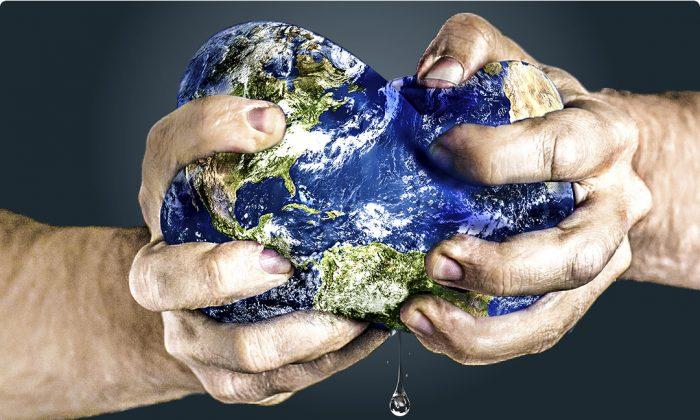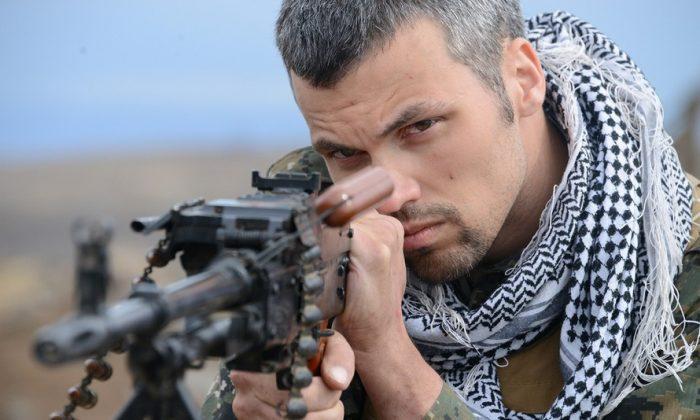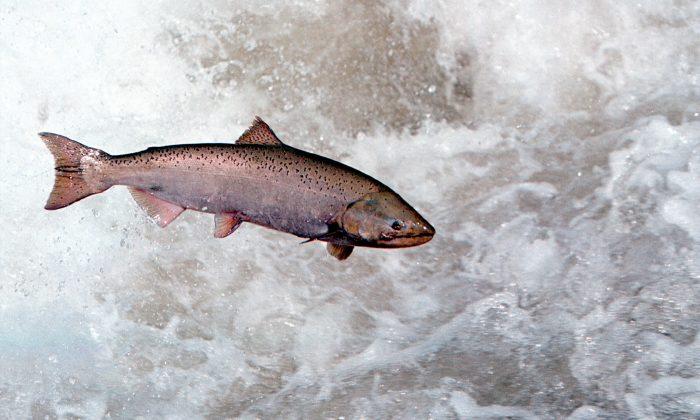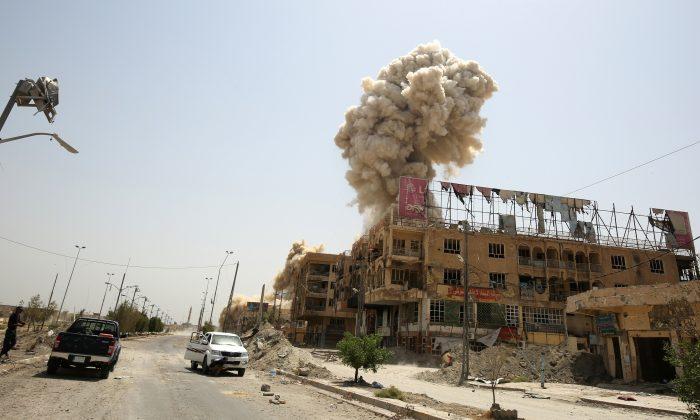When journalists watched American bombers strike Taliban positions in northern Afghanistan weeks after 9/11, Iraq wasn’t part of the story. But the Middle East can be like a kaleidoscope: a slight shift and the whole picture changes.
Seven years later, both Iraq and Afghanistan remain difficult, dangerous places for journalists to work. Iraq is especially deadly.
According to the Committee to Protect Journalists, from 2003 to 2008, 136 journalists were killed in Iraq; 129 died while not embedded, and most were Iraqi.
Last year, security conditions eased in Iraq, due in part to a U.S. troop “surge,” Sunni Awakening security forces and improvements in the Iraqi army. But things are by no means completely peaceful. In December alone, a suicide bombing in Kirkuk killed 48 and wounded 96; another in Baghdad killed 18 and injured 52.
“It’s not like Switzerland there now. The danger is still very real; what calm there is is still pretty fragile,” said Dexter Filkins, a New York Times foreign correspondent who worked in Iraq from 2003 to 2006.
“It’s not like reporters are walking around there in shorts on the sidewalk, advertising their presence.”
Filkins’ new book, “The Forever War,” paints a vivid and unvarnished picture of the war in Iraq. He notes that although the life of a journalist there is not easy, there was never a time when he relied solely on Iraqi journalists, embedding or second-hand information to get stories. In fact, Filkins refutes criticisms that journalists there are unwilling or unable to get out and report.
“It’s much easier to attack the messenger and say that ‘You have the wrong impression because you’ve been misled by these people in the press, and here’s the real truth,’” Filkins said. “The [accusation that] journalists sit around in hotel rooms and don’t leave is usually followed by some over-arching political point about the situation.”
Filkins said that even at the height of tensions and violence in 2006, he would find ways to report. Backed by the well-funded and heavily committed New York Times, he could use an armored car, a regular car, a chase car, no chase car or guards. He even went some places at night, depending on the circumstances.
But some journalists must rely heavily on embedding, a practice sometimes criticized for putting objectivity at risk.
“For about two or three years now, this has almost been like a challenge thrown at western journalists—what would they have them do, be murdered?” said Jon Lee Anderson, a staff writer for The New Yorker who has reported on Iraq and Afghanistan extensively but personally prefers not to embed. “I’ve covered over a dozen conflicts, and I’ve never been in such a murderous environment [as Iraq].”
Anderson said journalists should not be faulted for trying to preserve their lives, especially when they have continued to report such an unpopular story.
“There are very few westerners reporting on Iraq,” he said. “It’s less a reflection of journalists or media themselves than of popular interest.”
Anderson added that it’s a challenge for Americans to fasten their attention on so many different headline-grabbing crises at once.
“In the minds of most people, Iraq has moved away from near apocalypse and back from the brink, and that has been reflected by a sigh and move away from it by the media,” he said, predicting that news coverage will shift back toward Afghanistan.
Many reporters who have covered the wars in Iraq and Afghanistan have found both countries to present unique challenges, especially for freelance journalists.
“It’s changed so much since the early days of the occupation when you could still move around by yourself,” said Scott Wallace, a freelance reporter and photographer. In mid-2003, Wallace followed Iraqi police special agents and their U.S. advisers on missions to capture kidnappers and fedayeen commanders on the streets of Baghdad.
“You cannot cover that story unless you’re with a news organization that has made that commitment to security, personnel, blast walls,” Wallace said. “Even if you are a member of that very reduced number of people, you are largely confined to the U.S. military.”
In some cases, even access to a high-profile figure or a military unit can come down to news organization or a personal connection. Wallace experienced both such cases.
On assignment in 2003 for a program that airs on Fox television, he found that getting close to former New York City Police Commissioner Bernard Kerik, in Baghdad training the new Iraqi police force, rested on his affiliation. He also gained “extraordinary access” to a mechanized infantry company through a hometown connection with the company’s first sergeant.
Wallace said the working conditions in any war zone can challenge a journalist’s motivation.
“That takes conviction in your mission, that what we’re doing is of the utmost importance and we’re there to shed light on the story,” he said.
Robert Nickelsberg, a contributing photojournalist with TIME magazine for 25 years who syndicates his photographs with Getty Images, has been documenting Islamic fundamentalism’s rise in Afghanistan, Pakistan and India’s Kashmir. For Nickelsberg, the challenges facing journalists in Iraq make it near-impossible to do the job.
“I do not think it’s a workable environment for any journalist,” he said. “It’s just too dangerous. You almost need a small network of local people to get you from the airport to your hotel.”
He said Iraq requires journalists to work with the options they have, even if not ideal.
“There have been times when I only got a picture from a car with a window down,” Nickelsberg said. “There are people on rooftops with cell phones and walkie-talkies [watching you]. A rolled-down window could be all you get for the day.”
Nickelsberg was embedded with U.S. Marines in 2003 during the invasion of Baghdad. In May 2008, he reported from Sadr City, Iraq, the center of support for the radical Shiite cleric Muqtada al-Sadr. He said he thinks things have changed.
“In both places, [Iraq and Afghanistan] coverage has gone down,” Nickelsberg said. “The only way to see the urban and rural areas is with the military. We’re also finding there are fewer people who are willing to go.”
Regardless of the risks, the need to get the story remains.
“Luck is always involved,” Nickelsberg said. “But you set out to do certain things, face into the wind.”
In Afghanistan, luck may indeed play a part when journalists encounter harsh terrain, a poor infrastructure and a resurgent Taliban. Some think journalists will face a steep learning curve as they refocus on Afghanistan.
“The level of engagement, investment, blood and money were so extraordinary that the media were fixated on reporting that conflict [in Iraq],” said Bill Gentile, an independent journalist and filmmaker teaching at American University in Washington, D.C. He has covered inter-national conflict for almost 30 years. “The coverage of Afghanistan fell by the wayside, as did the administration’s focus. And now we are reaping the bitter fruits of that policy.”
Gentile was in Afghanistan when the bombs fell on the Taliban in 2001, and he was embedded in mid-2008 with the 24th Marine Expeditionary Unit near the Afghanistan-Pakistan border. His documentary of his most recent trip, produced for PBS’s program NOW, is called “Afghanistan: The Forgotten War.”
He said he thinks there are underreported lessons to be learned from the human suffering wrought by both wars.
“Americans don’t have a sense of the physical damage that this has done to some of its finest sons or daughters,” Gentile said. “I think it’s primarily because of the lack of aggressive media coverage.”
This damage gets to the heart of what Gentile thinks is the fundamental goal of the journalist reporting on conflict, whether in Iraq or Afghanistan.
“I think human loss is the main point,” Gentile said. “If you are not reporting on human loss, you are not covering conflict.”




Friends Read Free